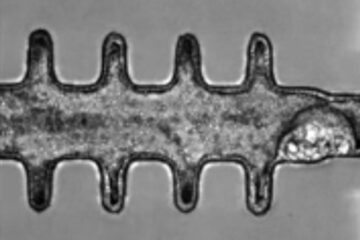New crystal structure of Alzheimer’s drug predicted

Issued by EPSRC on behalf of the UK e-Science Programme
Highlight from forthcoming e-Science All Hands meeting 2005
A challenge, presented at last year’s e-Science All Hands meeting, has resulted in an e-Science project achieving one of the holy grails of the pharmaceutical industry – the computational prediction of a previously unidentified crystal structure, or polymorph, of a drug molecule.
Researchers working on the e-materials project picked up the gauntlet and successfully predicted a new polymorph of the Alzheimer’s drug, piracetam. The work of the e-materials project will be presented at this year’s e-Science All Hands meeting which is being held in Nottingham from 20-22 September 2005.
The action of a drug is dependent not only on its chemical composition, but also on the way in which the drug molecules arrange themselves. For example, crystal structure can affect the drug’s solubility and hence its rate of absorption into the bloodstream. An unexpected polymorph could alter the drug’s therapeutic properties if it inadvertently contaminated the standard formulation.
Polymorphs are the bane of the pharmaceutical industry because they can be difficult to predict. Industrial chemists put a lot of effort into searching for new polymorphs using experimental techniques, but they can never be sure they have found them all. A new polymorph can turn up years later, sometimes resulting in the withdrawal of a drug from the market whilst the problem is identified and solved. Pharmaceutical companies are also keen to patent every polymorph of a drug to prevent a rival from undercutting them later with a new, therapeutically effective version.
The e-materials project, funded by the Engineering and Physical Sciences Research Council (EPSRC) as part of the e-Science Core Programme, is applying Grid technologies to address this problem. “We chose to study piracetam because it’s a well understood drug with three known polymorphs. We thought it was a good one to test our new methods against,” says Professor Sally Price from University College, London (UCL).
After presenting her work at last year’s e-Science All Hands meeting, Professor Price was presented with a challenge. Dr Colin Pulham from the University of Edinburgh asked her to predict the crystal structure of a new polymorph of piracetam that he had discovered using high pressure crystallisation techniques. “I told Professor Price that we had discovered a new form, but I didn’t tell her what is was. If her techniques were effective, she should be able to find it,” he says.
Predicting polymorphism in molecular structures is computationally very demanding. Millions of possible structures need to be analysed to identify those that are likely to be the most stable. Professor Price conducted the piracetam analysis on a campus grid at UCL. The e-materials project is building up a database containing the outputs of polymorphism searches and analysis at the Central Laboratory for the Research Councils (CCLRC). The database and a dataportal will shortly be available on the National Grid Service, providing information on an increasing range of molecules that may help identify other new polymorphs.
A few months after her challenge, Professor Price submitted a list of candidate structures in order of probability. The first on the list matched the structure that Dr Pulham and his team had found experimentally. “It was bang, spot on,” he says. “This result does a lot for the credibility of our methodology,” adds Professor Price.
The two continue to collaborate over other molecular polymorphisms, with Professor Price’s predictions of new polymorphs guiding Dr Pulham’s experiments, as well as vice versa. The next challenge is to develop the new e-Science techniques further to find polymorphism in increasingly complex molecules.
Media Contact
All latest news from the category: Life Sciences and Chemistry
Articles and reports from the Life Sciences and chemistry area deal with applied and basic research into modern biology, chemistry and human medicine.
Valuable information can be found on a range of life sciences fields including bacteriology, biochemistry, bionics, bioinformatics, biophysics, biotechnology, genetics, geobotany, human biology, marine biology, microbiology, molecular biology, cellular biology, zoology, bioinorganic chemistry, microchemistry and environmental chemistry.
Newest articles

Solving the riddle of the sphingolipids in coronary artery disease
Weill Cornell Medicine investigators have uncovered a way to unleash in blood vessels the protective effects of a type of fat-related molecule known as a sphingolipid, suggesting a promising new…

Rocks with the oldest evidence yet of Earth’s magnetic field
The 3.7 billion-year-old rocks may extend the magnetic field’s age by 200 million years. Geologists at MIT and Oxford University have uncovered ancient rocks in Greenland that bear the oldest…

Mini-colons revolutionize colorectal cancer research
As our battle against cancer rages on, the quest for more sophisticated and realistic models to study tumor development has never been more critical. Until now, research has relied on…





















